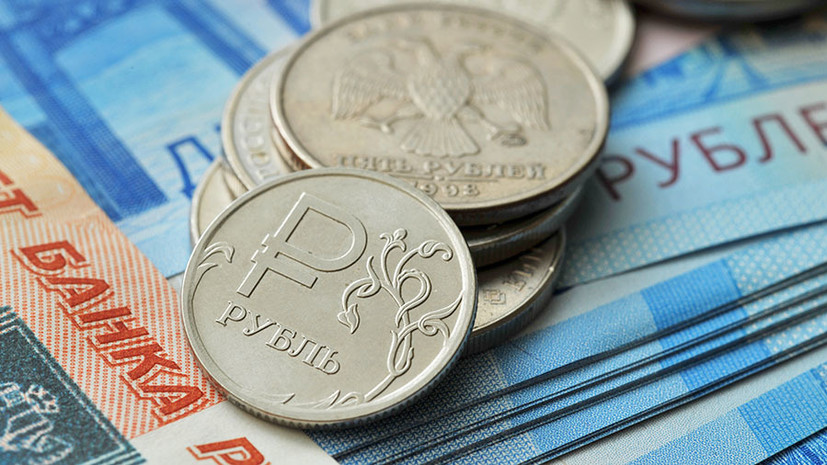2019 was marked by a sharp strengthening of the Russian currency. From January to December, the US dollar on the Moscow Exchange fell by almost 13%, to 62.2 rubles, and the euro - by 14%, to 69 rubles. The last time a similar situation could be observed in mid-2018.
“The outgoing year can be called successful for the ruble and the Russian financial market as a whole. The reasons for the strengthening of the national currency and the growth of stock quotes were the reduction of sanctions risks and the inflow of foreign capital into ruble assets, ”Anton Pokatovich, BCS Premier Analyst, told RT.
According to the latest information from the Central Bank, since the beginning of the year, investors have additionally invested almost 1.53 trillion rubles in Russian debt bonds. Moreover, among buyers of government securities, the share of foreigners increased from 24.4% to 32%.
In addition, the national currency supported the interest of foreign investors in the Russian stock market. From January to December, the Mosbirzhi index grew by more than 27% and for the first time since 1997 rose above the mark of 3020 points.
“Compared to emerging markets, Russia has a strong macroeconomic foundation. A budget and current account surplus, controlled inflation, a relatively low external debt, large reserves, the absence of risks of a critical economic downturn - all this makes Russia very attractive for foreign capital, ”Pokatovich said.
As Mikhail Kogan, head of the analytical research department of the Higher School of Financial Management, emphasized in a conversation with RT, in 2019 the ruble became the growth leader among other risky currencies in the world. So, over the past 12 months, the Mexican peso has risen in price to the dollar by only 3.8%, the national currencies of India and Indonesia - by 2.5%, the South African rand - by 1.5%, and the Brazilian real weakened by 5.7%.
To a certain extent, the Russian currency was also supported by a marked increase in world oil prices. From January to December, the raw materials of the Brent benchmark rose more than 20%, to $ 66–67 per barrel.
However, the influence of oil prices is limited by the budget rule, which stipulates that during the rise in oil prices, the Ministry of Finance buys foreign currency and thereby puts pressure on the ruble. Moreover, in the event of a collapse in the energy market, the ministry ceases operations - and pressure on the ruble weakens. As a result of such actions, the dependence of the national currency on oil prices is reduced.
Recently, the effect of the budget rule has weakened the relationship between the ruble and oil, so currency market players have become less likely to react to changes in commodity prices.
“If we compare the dynamics of oil prices and stock markets, then the ruble really responded well to the growth of exchanges. At the same time, the national currency was almost completely able to untie it from fluctuations in oil prices, ”said Mark Goichman.
It is curious that even in late autumn, experts predicted a slight depreciation of the ruble by the end of the year. As Mark Goichmann explained, in December the national currency usually weakens under the influence of seasonal factors. So, traditionally before the New Year in Russia, demand for dollars and euros is increasing.
Meanwhile, since the beginning of winter, the ruble has suddenly risen in price. Analysts explain the situation at the foreign exchange market, atypical for December, as a change in investor sentiment. Players responded positively to the decline in the war in the US and China.
In the spring of 2019, trade relations between Washington and Beijing deteriorated sharply. However, already in the fall, the parties resumed negotiations to end the tariff war and refused to introduce new mutual restrictions. Moreover, in December, US President Donald Trump announced the possible coordination of the first phase of the trade deal “within a couple of weeks.”
Traditionally, during the reduction of geopolitical tensions in the world, investors begin to actively purchase risky assets. As a result, improved trade relations between the States and China had a positive effect on the ruble.
“The inflow of foreign capital to all groups of risky assets, including the ruble, increased significantly after the rejection of a new round of the trade war. The markets end the year in a state of euphoria and therefore ignore many risks, ”said Anton Pokatovich.
According to Mark Goikhman, while maintaining the current conditions, the ruble may continue to strengthen in the first half of 2020. According to the analyst, in the coming months, the dollar has a chance to drop below 60 rubles.
“China and the USA will stretch trade agreements for a few more months. As a result, the slow but persistent inflow of money into ruble assets will continue. Thus, the dollar may fall at least below the level of 60 rubles, and the euro will take the corridor 65-70 rubles, ”the analyst concluded.

